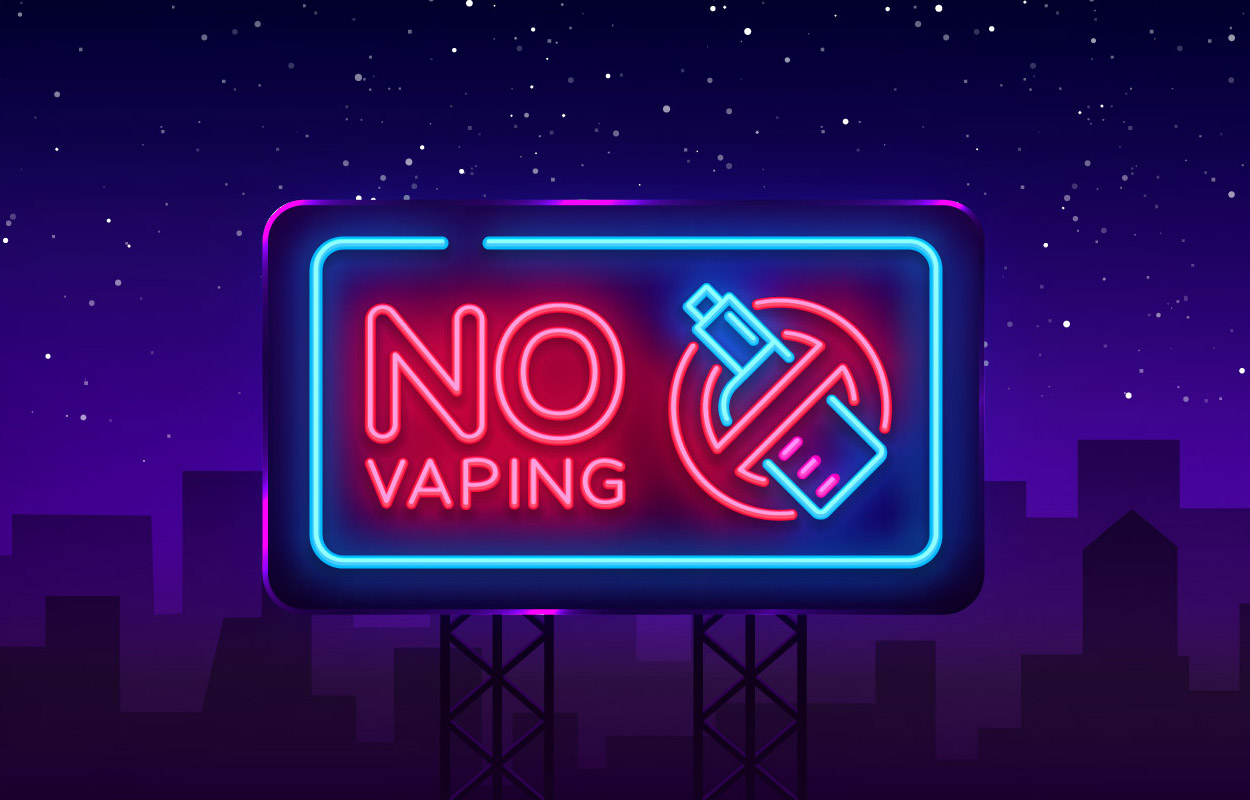 How to Quit Smoking Ecigarettes
How to Quit Smoking Ecigarettes
How to Quit Vaping: Strategies from Experts and People Trying to Quit
- Guide Authored by Corin B. Arenas, published on November 18, 2019
If you’re a vape user, you know how good it feels to get your vape fix.
But if you want to quit e-cigarettes, especially after a wave of vaping-related lung injuries, it’s often a difficult road.[1] Whether you’re an adult who wants to stop vaping or a student trying to quit JUUL amidst peer pressure, it’s important to research how you can quit for good.
But how does one quit vaping? At the moment, there is a major research gap for effective vaping cessation methods. In a WebMD interview with Linda Richter, director of policy research and analysis at the Center on Addiction, she states: [2]
“The science of vaping cessation hasn’t caught up with the tremendous rise in use… There really isn’t much out there that’s been proven.”
In a related report by the Boston Globe, Boston University community health professor Dr. Michael Siegel notes that we do not really know how hard it is to quit vaping. He states: [3]
“There is no data. The truth is that the only real evidence is based on anecdotes.”
Health researchers are observing the effects of vaping on people’s behavior, as well as how vaping cessation varies from quitting cigarettes. But as more and more people are hooked on vapes, there is an urgent need to find effective ways to stop it.
In this section, we’ll discuss why vaping is addictive, quitting strategies backed by experts, as well as interviews from people who have quit or are trying quit.
Why is Vaping So Addictive?

Regular vape users are almost certainly addicted to nicotine. According to a feature by Vice, it’s important to understand that the underlying chemical effect of cigarettes and vapes is the same.[4] Nicotine is addictive because it makes people feel good.
The Mayo Clinic states that the brain changes when exposed to very high levels of nicotine.[5] This releases dopamine, a brain chemical that makes you feel good. Responding and feeding that pleasure is a great part of the addiction process. It’s especially bad for teens because it can seriously harm the developing brain.
Quitting entails experiencing uncomfortable symptoms. If you quit vaping, you might go through the following withdrawal symptoms: [6]
- Irritability and mood swings
- Strong cravings to vape
- Anxiety
- Difficulty concentrating
- Difficulty sleeping
- Headaches
- Sweating
- Tremors
- Restlessness
- Increased appetite
Too Much Nicotine: Hardwired for Pleasure

Unlike cigarettes, vapes contain significantly larger amounts of nicotine. Leading e-cigarette company JUUL has more nicotine than most vapes in the market, offering cartridges with 59 mg/ml of nicotine.[7] This is a huge difference from vapes regulated by the European Union, with a maximum of 20 mg/ml of nicotine.[8]
One JUUL pod contains 20 cigarettes worth of nicotine.[9] If a high school student smokes one pod a day, that’s equal to nicotine in one pack of cigarettes.
According to the Hamilton Country Health Department, JUUL also perfected nicotine chemistry so it would peak in the blood about 5 minutes after the first puff.[10] This sensation is the closest people get to smoking cigarettes. E-cigarettes also vaporize a liquid which contain nicotine salts, making it go down more smoothly than cigarettes.
Without the need to go out, children can vape indoors and hide it from teachers and parents. There are adults who vape as soon as they wake up, when they’re in the office and right before they sleep. Discreetly designed vapes feed this addiction, making it more convenient to use e-cigarettes almost anytime, anywhere.
Smoking Cessation Tools Not As Effective for Young Vapers

While vaping is similar to smoking cigarettes, we must understand their addictive effects are different. Because of these differences, WebMD states that the current nicotine replacement therapy (NRT) for cigarette smokers may not necessarily work for young vape users.[2]
NRT can be prescribed by doctors to vaping teens (NRT is only approved for people 18-years-old and up), but it doesn’t seem that effective. It’s possible that nicotine levels in NRT products are just too low to help wean off young vape users. If that is the case, slightly more nicotine in NRT might be needed to help teens addicted to vapes.
But for adults, a 2016 study reports that a 24 year-old adult was able to quit vaping successfully through behavioral counseling and NRT.[11] Some adults are also given antidepressants to help them stop smoking or vaping.
However, other physicians are wary of giving antidepressants to the youth. Antidepressants have been shown to increase suicidal thoughts in teens.[12]
Smoking and Vaping Cessation Resources
Visit the links or call the following support lines to help you quit vaping:
National Cancer Institute LiveHelp Chat Support
800-QUIT-NOW (800-784-8669)
All states provide quitlines with trained counselors that help smokers quit.
877-44U-QUIT (877-448-7848)
Call Monday to Friday, 9AM – 9PM. The National Cancer Institute has trained counselors who can provide information and support in English and Spanish.
Truth Initiative E-cigarette Quit Program
Youth and young adults can join the new e-cigarette quit program by texting “DITCHJUUL” to 88709. Parents and other adults looking to help the youth quit should text “QUIT” to (202) 899-7550.
Strategies You Should Do to Quit E-Cigarettes
Though there are no proven techniques yet for vaping cessation, it helps to know how to take control of addiction. Those who want to quit e-cigarettes can also learn a lot from people who are quitting and those who have successfully stopped vaping.
Here are 9 methods from doctors, addiction specialists, anti-vape organizations and former vape users that can help you stop vaping:
1. Get support. Tell family and friends you’re quitting.

Make it known that you’re serious about quitting e-cigarettes.
A related feature on CNET highlights the importance of having a supportive circle of people while you’re trying to quit.[10]
Though some behavioral research indicates that keeping goals to one’s self is better, it does not apply to addiction.[13] A supportive group will help keep you accountable and make sure you’re always on the right track.
Even if it’s just a few friends, sharing your plan to quit will allow you to announce your improvements along the way. This affirms your efforts and reinforces your resolve to stop vaping.
For young people, support is exactly what they need. The Boston Globe interviewed Matt Murphy, a junior at UMAss Lowell.[3] He stopped vaping in June 2019 after his mother found his stash of used JUUL pods. Matt attributes quitting e-cigarettes to the strong support he got from his parents.
“A lot of parents decide to go the punishment route… That doesn’t work because then you have to worry about your parents on top of the neurological dependence. It’s important to remember you both have the same goal, which is not to Juul.”
Matt Murphy
2. Ask for help and get professional counseling.
Speaking to an expert can help. In an interview with Vice, Deborah Buckles states that the most effective means of tobacco treatment is medication with counseling.[4] Buckles is the program director of the Tobacco Treatment Program at the Indiana University Melvin and Bren Simon Cancer Center.
This approach may apply to vaping, as counseling and medication aims to rewire the brain by reversing physiological changes caused by nicotine. Treatment can unpack daily psychological habits, which can turn vaping sessions into other fruitful activities such as writing or going for a run.
Where do you get professional help? According to CNET, you might want to check out a rehab center near your area that treats nicotine addiction.[10] You can also inquire about outpatient counseling like cognitive behavioral therapy and motivational interviewing.[14, 15]
If you want to talk to someone about your vape problem, you can call the National Institutes of Health quitline or go to their online chat system for help.[16, 17]
In an October 2019 article in People, reports showed that more and more teens are calling quitlines while vaping-related health problems are on the rise.[18] Lindsy Hatfield, program director for First Choice Services which operates the West Virginia’s quitline states:
“Some people we found did not know that Juul was an e-cigarette, vape or nicotine device… They felt that Juul did not have nicotine in it, and so it couldn’t be the same thing” [as an e-cigarette].”
3. Talk to your doctor about nicotine replacement therapy (NRT).

Along with counseling, talk to your doctor about NRT. It’s an FDA-approved drug for smoking cessation.
The most common types of NRT are available in nicotine patches, gums and lozenges. These can be purchased over the counter by adults, while nicotine inhalers and sprays require a prescription.
NRT works by giving nicotine addicts smaller and smaller doses to regulate withdrawal symptoms. This method helps wean nicotine addicts off the drug, according to a Vice interview with Pushan Jani, assistant professor of pulmonary and sleep medicine at McGovern Medical School at UTHealth in Houston.[4]
However, NRT also comes with some side-effects. Be prepared to experience nausea, palpitations, dizziness and hiccups. While we previously mentioned NRT might not be very effective to help teens stop vaping, it might help to try it with your doctor’s guidance.
Buzzfeed published an article featuring Buzzfeed Community members who have quit Juuling.[19] One of the members under profile name jlc0914 shared their experience with NRT and getting professional help:
“I would quit smoking or vaping and then start again. It got so bad my doctor had to put me on an antidepressant in order to quit. I called the quitline and got free nicotine gum, and that helped with the cravings. The vape is not worth the withdrawals or long-term side effects associated with nicotine. It is an addictive drug with grave consequences.”
4. Identify triggers that make you crave vaping.
SmokeFree.gov recommends pinpointing your vaping triggers.[20] This could be anything from a going through a stressful day or social triggers like seeing your friends vape. Once you’re aware of your triggers, you’ll learn how to manage them so you can quit for good.
Here’s a list of things from SmokeFree.gov that can help you deal with triggers:
- Throw out vapes, chargers and pods. Get rid of the thing itself, as well as anything that reminds you of vaping.
- Plan ahead. Practice saying no in case someone offers you a vape.
- Avoid areas where people vape. Explain why you can’t go to parties or your friend’s house for a while. Ask for your friends’ support.
- Take time off social media. Don’t follow social media accounts with vapes. Unsubscribe emails that link to e-cigarette products.
- Change your daily routine. Take a different route to school or work, eat elsewhere during lunch. Try to sign up for new activities that will get your mind off vaping.
- If you find yourself in a stressful situation, take a break. Calm down by going for a walk or finding quiet time alone. Do other things like exercise to release stress instead of vaping.
- Take care of yourself. Make sure to get enough sleep, eat a balanced diet and drink plenty of water. Keeping healthy helps rid your mind and body of stress.
- Reach out to others. Don’t keep your problems to yourself. Talk to a close friend, parent or a trusted adult when you’re feeling down. You can also get free and personalized support from the National Cancer Institute’s LiveHelp service.[21]
5. Make a plan to handle your nicotine cravings.

In a CNET interview with Dr. Kevin Gilliland, Psy.D., executive director of the Innovation360 addiction clinic, he states that it’s important to prepare yourself for nicotine cravings or you might go back to square one.[10]
Dr. Gilliland advises against just sitting around and watching your thoughts go by about vaping. Part of quitting means actively looking for other things to do and focusing on your progress. Instead of vaping, call a friend for support, or take your dog out for a walk. There are other things you can do to pass the cravings.
Former vape user Kari Paul wrote an article on The Guardian about her journey to quit e-cigarettes.[22] She mentioned reading Allen Carr’s Easy Way to Stop Smoking, which includes how to stop the habit after “3 days of pain,” promising freedom from nicotine cravings.
Paul’s plan was to lock her JUUL in a timed safe close to 72 hours to finally quit vaping. She writes:
“During what may have been the worst 72 hours of my life, the idea that nicotine withdrawal would simply dissipate if I could refrain from hitting the stupid metal vape that got me here was incomprehensible.
I scheduled my quitting days for the weekend so I could retreat into withdrawal in peace, but it was hellish. I biked manically, I cried publicly, I grew irritated at nearly every sound I heard. But on day four I woke up with a realization: I no longer wanted nicotine.”
6. Substitute e-cigarette use with other activities that make you feel good.
Which brings us to the next part: replace addictive behavior with something positive.
People who turn to vapes when they’re stressed only use it as a band-aid solution, according to Dr. J. Taylor Hays in a Truth Initiative article.[23] Dr. Hays is professor at the Mayo Clinic College of Medicine and director of the Mayo Clinic Nicotine Dependence Center.
Quitting e-cigarettes is the best time to reflect on your stress coping skills. This means developing healthy and effective alternatives to fight stress that will help you through the years.
In relation to finding healthier alternatives, Dr. Gilliland recommends creating a list of activities that can work for you. Many former smokers found success in turning their smoking habits into other activities such as exercising or running.
But the great thing about it is you can replace vaping with just about anything you like, such as painting, cleaning, singing, dancing, and so on. To achieve your goal to quit, you have to invest some time for self-growth.
7. Surround yourself with people who don’t vape or who are also trying to quit.

This effective plan is easier said than done. While being around non-vapers and quitters certainly helps, your determination will ultimately influence whether you’ll give up vaping.
Make an active effort to engage in friends, family, schoolmates or workmates who do not vape. Instead of joining people who vape during weekends, why not spend it with close friends who don’t smoke or vape?
The Boston Globe interviewed former vape user named Connor who has gone through failed attempts to quit e-cigarettes.[3] Connor threw away his vape, started doing push-ups and hydrates himself with water to replace the oral fixation.
In the interview, he scheduled a quit date for May 11, which he says is the best time. That’s right before summer when there are less school-related activities and social pressure. Moreover, he mentioned having 2 ‘quit buddies.’ Whenever he gets a craving in the middle of the night, he messages the quit buddies he met on Reddit.
8. Start exercising. Engage in more physical activities.
According to a 2017 article on Science Daily, researchers at St. George University London found that exercise helps smokers quit.[24] Evidence suggests that moderate to intense exercise in humans can help reduce the symptoms of nicotine withdrawal.
Findings also revealed that exercise increases the activation of α7 nicotinic acetylcholine, a type of brain receptor which is targeted by nicotine.
In relation to quitting e-cigarettes, Dr. Hays also recommends exercise to vape users who want to quit. He states that: [21]
“Instead of using nicotine to get that ‘feel good’ response in the brain, you are doing it more naturally thanks to the endorphin boost you can get from physical activity.”
9. Think of your savings once you quit e-cigarettes.

To keep yourself motivated, imagine how expensive your vaping addiction is getting. Such is the case for former vaper user, Luka.
In an October 2019 WBUR podcast , Luka Kinard shared what it’s like being hooked on e-cigarettes as a 14 year-old.[25] He started vaping in his freshman year of high school but has now kicked the habit at 16.
Luka estimates that he would finish a pack of vape pods a day, which is about $150 worth of pods per week. That’s around $600 worth of pods a month.
If you have a ferocious vaping habit, just think of all the money you can save for more important things. You certainly shouldn’t spend a fortune on useless, unhealthy vices.
The Bottom Line

Currently, there are no approved or tested techniques for quitting e-cigarettes. Though it is largely patterned after smoking cessation, weaning off vape use is different from cigarette smoking. This is because e-cigarettes deliver higher levels of nicotine, making them more addictive than cigarettes.
However, there are plenty of options that can help you stop the habit. Consult your doctor and find counseling. You can also get resources from anti-vaping organizations like the National Cancer Institute and the Truth Inititative to quit e-cigarettes.
Remember: If one strategy doesn’t work, try something else. What matters is you’re actively trying to quit and applying suggested ways to stop vaping.
The information in this article is for educational and informational purposes only. It is not intended to replace health or medical advice. Always consult a doctor or qualified health provider about questions you may have about health objectives or medical conditions.
About The Author
Working as a health writer since 2016, Corin is interested in longevity research and how to improve the quality of human life. She holds a Master’s degree in Creative Writing from the University of the Philippines, one of the top academic institutions in the world, and a Bachelor’s in Communication Arts from Miriam College. Her other feature articles can be read on Inquirer.net and Manileno.com.
References
- https://www.wsj.com/articles/investigators-find-clue-to-mysterious-vaping-injuries-11573236635
- https://www.webmd.com/smoking-cessation/news/20190131/what-works-to-help-teens-quit-vaping#3
- https://www.bostonglobe.com/metro/2019/07/07/reckoning-with-cigarette-addiction/qywLlZzAY0YF3309LdbBXL/story.html
- https://www.vice.com/en_us/article/ywab3y/how-to-quit-vaping
- https://newsnetwork.mayoclinic.org/discussion/smokers-brains-change-in-response-to-high-levels-of-nicotine/
- https://www.medicalnewstoday.com/articles/323012.php#symptoms
- https://tobaccocontrol.bmj.com/content/28/2/146
- https://www.bloomberg.com/news/articles/2019-09-13/europe-says-thank-you-for-vaping-as-u-s-tells-consumers-to-stop
- https://truthinitiative.org/research-resources/emerging-tobacco-products/how-much-nicotine-juul
- https://www.hamiltoncounty.in.gov/DocumentCenter/View/11621/What-is-Juul-PDF
- https://www.ncbi.nlm.nih.gov/pmc/articles/PMC4831396/
- https://childmind.org/article/antidepressants-and-teen-suicides/
- https://journals.sagepub.com/doi/abs/10.1111/j.1467-9280.2009.02336.x
- http://www.nacbt.org/whatiscbt-htm/
- https://www.psychologytoday.com/us/therapy-types/motivational-interviewing
- https://smokefree.gov/tools-tips/get-extra-help/speak-to-an-expert
- https://people.com/health/teens-are-calling-help-hotlines-as-vaping-illness-cases-rise/
- https://www.buzzfeednews.com/article/carolinekee/stop-juuling-stories-people-who-quit-juul
- https://teen.smokefree.gov/quit-vaping/understand-your-vaping-triggers
- https://livehelp.cancer.gov/app/chat/chat_launch
- https://truthinitiative.org/research-resources/quitting-smoking-vaping/quitting-vaping-here-are-5-tips-handling-nicotine
- https://www.sciencedaily.com/releases/2017/12/171219220355.htm
- https://www.wbur.org/onpoint/2019/10/08/vaping-deaths-illnesses-teens-quitting
